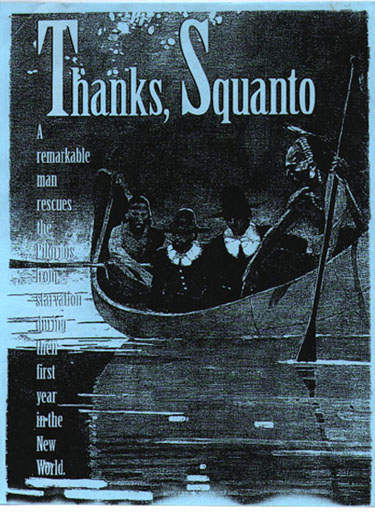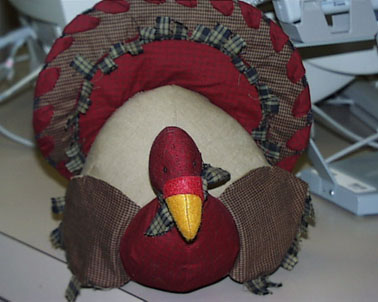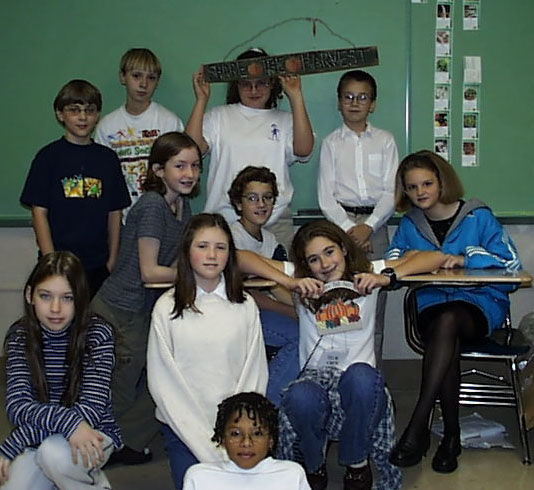 Thanksgiving
Thanksgiving  Thanksgiving
Thanksgiving
November 25, 1999
The students of Vine Middle Performing Arts & Sciences Magnet School would like to share a part of their Thanksgiving history (both past and present) with you.
Aside from both the wonderful and traditional foods that we prepare for this day, it is a day that signifies how much that we are truly thankful for; our families, friends, and life circumstances are considered blessings.
Many Americans find themselves on the roadways of this great country travelling to spend time with their families and friends. It is a well known fact that this holiday is the most travelled than any other holiday of the year. Roads are in a constant grid-lock, airports are at capacity, and still yet, we maintain the honor of tradition to make good on the commitment of being with those we cherish so much.
Historically, Thanksgiving is best known as a story about the Pilgrims who settled in the Americas seeking religious freedom. It is a story about putting their faith into practice by accepting the assistance from cultures different than their own. It is a story of a complex world where survival is the ultimate objective. The story is about one particular Native American who befriended the Pilgrims rescueing them from near death.
Tisquantum (Squanto), was a member of the
Pawtuxet Indian tribe who lived in what is now known as Massachusetts.
Squanto was born in America but had the opportunity to travel
in overseas adventures. At the age of 25 he travelled with the
explorer, George Weymouth to England. This experience provided
Squanto to learn English. After spending over nine years in England,
he was on his way back to the New World when he was captured by
a slave trader and sold to Spain along with 27 other Indians.
After spending time as a slave, Squanto eventually escaped and
made his way back across the Atlantic. He found his tribe and
land had changed drastically.
The Pilgrims had settled in the New World around 1621. Life was hard for them . Their food supplies were nearly empty and Winter was approaching. Of the 102 settlers who had travelled across the Atlantic, about half remained. Disease was common among both the settlers and the Indians. For the Pilgrims who travelled on the Mayflower, their first year would surely have been their last without the help of Squanto and the leader of the Wampanoag tribe, Massasoit, who had signed a treaty with the Pilgrims. Massasoit let Squanto live with the Pilgrims because of his ability to speak their language and act as interpreter.
Squanto taught them how to plant corn which became a main staple for the settlers thus allowing them to survive. As Spring approached, the settlers planted the corn seed along with herring fish used as fertilizer . By the end of Summer, they had 20 acres of corn that needed harvesting. The Pilgrims had much to be thankful for. Without the assistance from Squanto, they would not have survived. He had shown them how to feed themselves.
With a good harvest, the Pilgrims decided to throw a feast and invited the Indians to share in their joy and celebration. The first Thanksgiving took place in 1621. Both the settlers and the Indians offered prayers of thanks for the harvest and life.
 Their three day celebration
consisted of music, dance and games along with meals to be shared
by everyone. Their menu might have included: turkey, biscuits,
bread pudding, roast goose and duck, venison, lobster, eels ,clams,
oysters, and dried fruits. Take a look at some of their food
sources and recipes.
Their three day celebration
consisted of music, dance and games along with meals to be shared
by everyone. Their menu might have included: turkey, biscuits,
bread pudding, roast goose and duck, venison, lobster, eels ,clams,
oysters, and dried fruits. Take a look at some of their food
sources and recipes.
Today, our Thanksgiving feast consists of turkey, cornbread stuffing ( dressing) pumpkin and mince pie, cranberry sauce and other wonderful foods that are a part of our family tradition.
Thanksgiving day was proclaimed by our first President, George Washington, on November 26, 1789. After 242 years, it has become a national holiday with three days of feasts.
Thanksgving is not new to America. This custom has been historically recorded throughout history for thousands of years. Many cultures have celebrated a day of thanks; the Chinese, Greeks, Romans, and ancient Jews have participated in the feast of Thanksgiving.
( Referenced From: Davis, Lester, Boys Life magazine, November 1995)
